 On September 2, 1945, Japanese representatives signed the official Instrument of Surrender, prepared by the War Department and approved by President Harry S. Truman. It set out in eight short paragraphs the complete capitulation of Japan.
On September 2, 1945, Japanese representatives signed the official Instrument of Surrender, prepared by the War Department and approved by President Harry S. Truman. It set out in eight short paragraphs the complete capitulation of Japan.
The opening words, “We, acting by command of and in behalf of the Emperor of Japan,” signified the importance attached to the Emperor’s role by the Americans who drafted the document.
The short second paragraph went straight to the heart of the matter: “We hereby proclaim the unconditional surrender to the Allied Powers of the Japanese Imperial General Headquarters and of all Japanese armed forces and all armed forces under Japanese control wherever situated.”
Prior to the atomic attacks on Hiroshima and Nagasaki, elements existed within the Japanese government that were trying to find a way to end the war. In June and July 1945, Japan attempted to enlist the help of the Soviet Union to serve as an intermediary in negotiations.
No direct communication occurred with the United States about peace talks, but American leaders knew of these maneuvers because the United States for a long time had been intercepting and decoding many internal Japanese diplomatic communications.
From these intercepts, the United States learned that some within the Japanese government advocated outright surrender. A few diplomats overseas cabled home to urge just that.

Harry Truman announcing Japan’s surrender at the White House, Washington, DC, 14 Aug 1945.
From the replies these diplomats received from Tokyo, the United States learned that anything Japan might agree to would not be a surrender so much as a “negotiated peace” involving numerous conditions.
These conditions probably would require, at a minimum, that the Japanese home islands remain unoccupied by foreign forces and even allow Japan to retain some of its wartime conquests in East Asia.
Many within the Japanese government were extremely reluctant to discuss any concessions, which would mean that a “negotiated peace” to them would only amount to little more than a truce where the Allies agreed to stop attacking Japan.
After twelve years of Japanese military aggression against China and over three and one-half years of war with the United States (begun with the surprise attack on Pearl Harbor), American leaders were reluctant to accept anything less than a complete Japanese surrender.

Representatives of the Empire of Japan stand aboard USS Missouri prior to signing of the Instrument of Surrender.
The one possible exception to this was the personal status of the emperor himself. Although the Allies had long been publicly demanding “unconditional surrender,” in private there had been some discussion of exempting the emperor from war trials and allowing him to remain as ceremonial head of state.
In the end, at Potsdam, the Allies went with both a “carrot and a stick,” trying to encourage those in Tokyo who advocated peace with assurances that Japan eventually would be allowed to form its own government, while combining these assurances with vague warnings of “prompt and utter destruction” if Japan did not surrender immediately.
No explicit mention was made of the emperor possibly remaining as ceremonial head of state. Japan publicly rejected the Potsdam Declaration, and on July 25, 1945, President Harry S. Truman gave the order to commence atomic attacks on Japan as soon as possible.
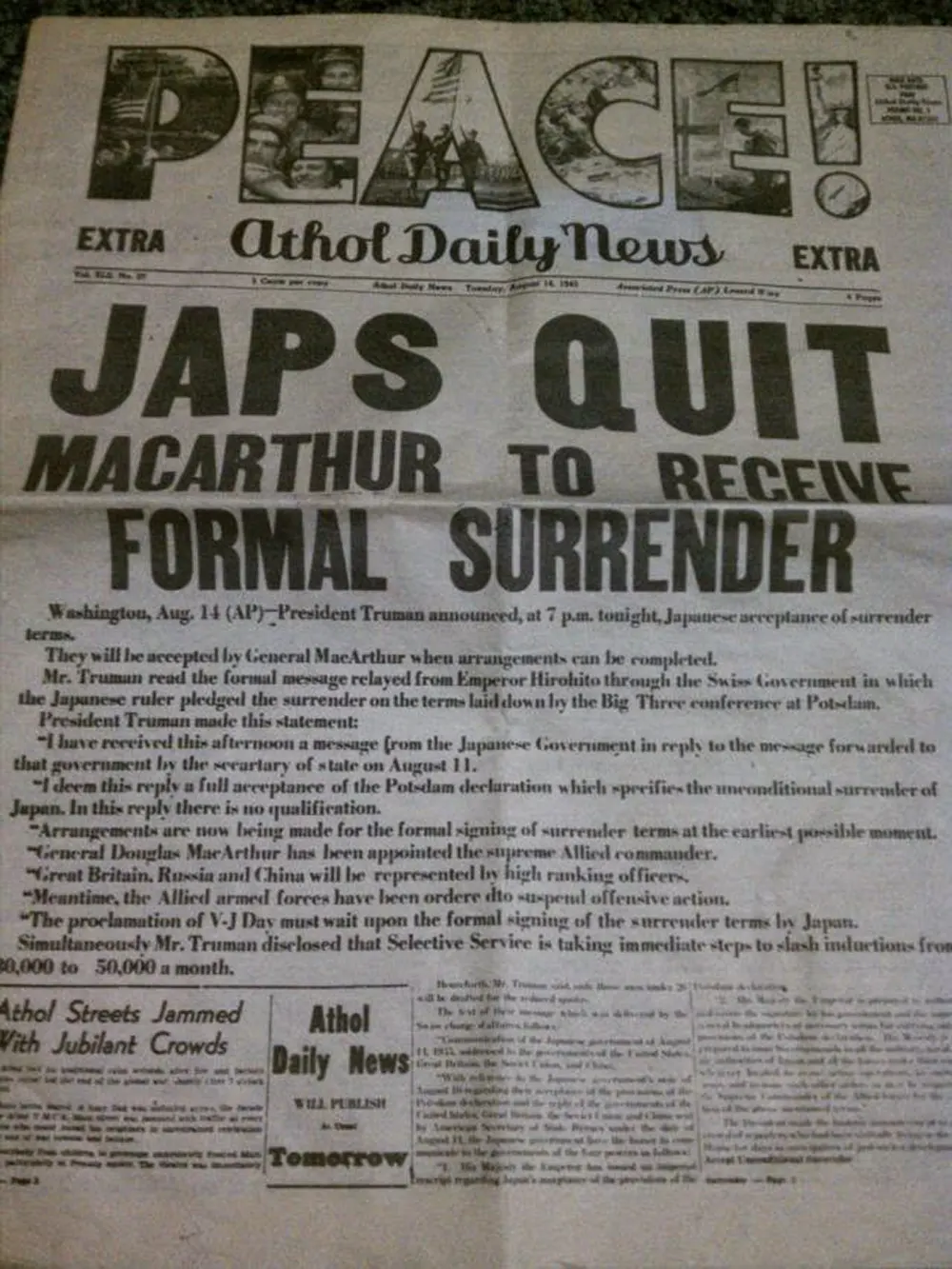
The actual surrender took place on 14 August 1945. All that was left was the formal ceremony and occupation.
Following the bombing of Hiroshima on August 6, 1945, the Japanese government met to consider what to do next.
The emperor had been urging since June that Japan find some way to end the war, but the Japanese Minister of War and the heads of both the Army and the Navy held to their position that Japan should wait and see if arbitration via the Soviet Union might still produce something less than surrender.
Military leaders also hoped that if they could hold out until the ground invasion of Japan began, they would be able to inflict so many casualties on the Allies that Japan still might win some sort of negotiated settlement.
Next came the virtually simultaneous arrival of news of the Soviet declaration of war on Japan on August 8, 1945, and the atomic bombing of Nagasaki on the following day.
Another Imperial Council was held the night of August 9-10, and this time the vote on surrender was a tie, 3-to-3. For the first time in a generation, the emperor stepped forward from his normally ceremonial-only role and personally broke the tie, ordering Japan to surrender.
On August 10, 1945, Japan offered to surrender to the Allies, the only condition being that the emperor be allowed to remain the nominal head of state.
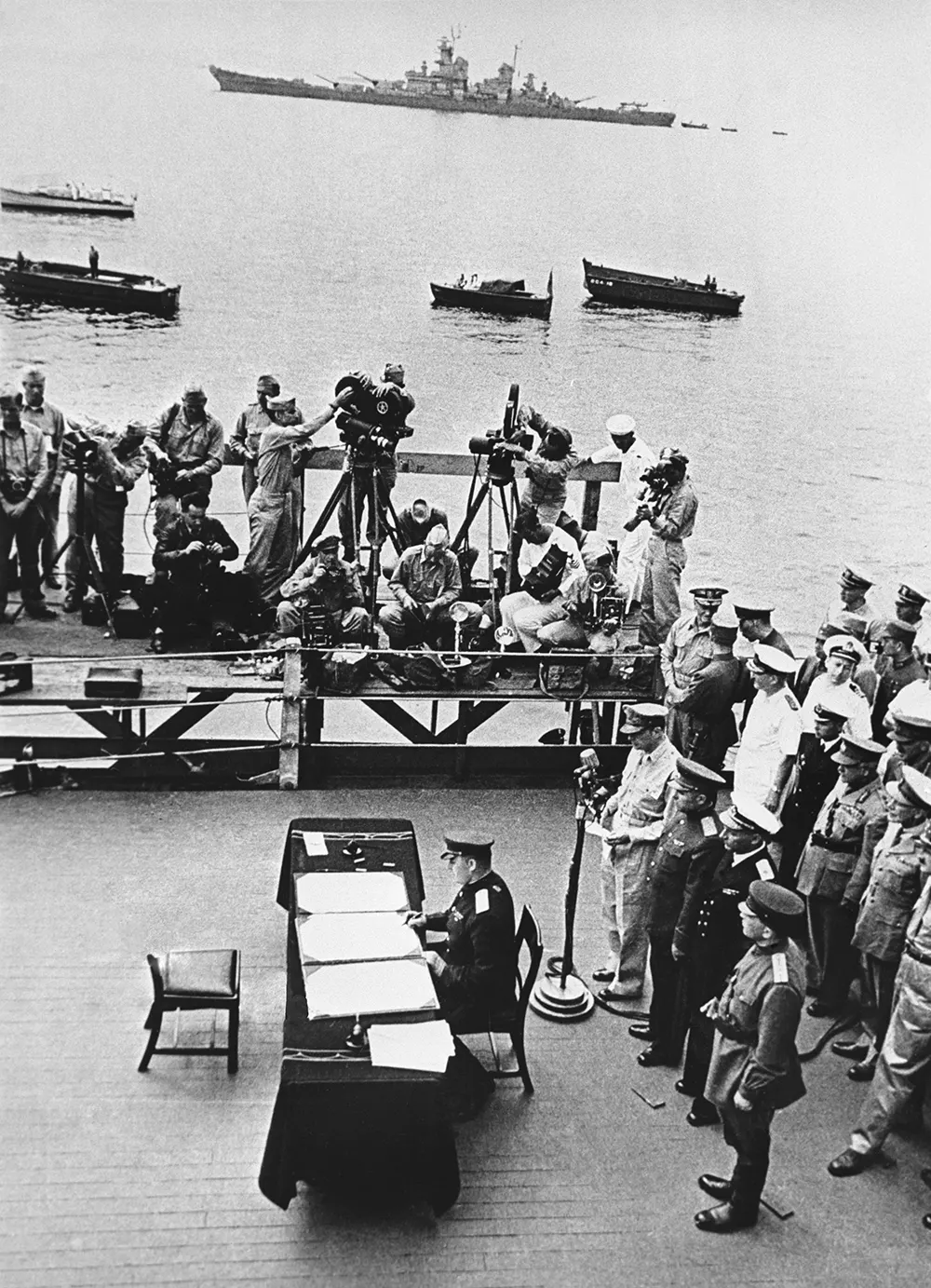
A rarely seen picture of a Russian commander signing the Surrender document.
Emperor Hirohito gave different reasons to the public and the military for the surrender: When addressing the public, he said, “the enemy has begun to employ a new and most cruel bomb, the power of which to do damage is, indeed, incalculable … . Should we continue to fight, not only would it result in an ultimate collapse and obliteration of the Japanese nation, but also it would lead to the total extinction of human civilization.”
When addressing the military, he did not mention the “new and most cruel bomb” but rather said that “the Soviet Union has entered the war against us, [and] to continue the war … would [endanger] the very foundation of the Empire’s existence.”
Public reaction to the Emperor’s speech varied—many Japanese simply listened to it, then went on with their lives as best they could, while some Army and Navy officers chose suicide over surrender.
A small crowd gathered in front of the Imperial Palace in Tokyo and cried, but as author John Dower notes, the tears they shed “reflected a multitude of sentiments … anguish, regret, bereavement and anger at having been deceived, sudden emptiness and loss of purpose”.

“Soviet soldiers on the bank of the Songhua River in Harbin. The Japanese-occupied city was liberated by Soviet troops on August 20, 1945. Some 700,000 Soviet troops occupied Manchuria by the time Japan surrendered.”
Japanese officials left for Manila on 19 August to meet Supreme Commander of the Allied Powers Douglas MacArthur, and to be briefed on his plans for the occupation. On 28 August 150 US personnel flew to Atsugi, Kanagawa Prefecture, and the occupation of Japan began.
They were followed by USS Missouri, whose accompanying vessels landed the 4th Marines on the southern coast of Kanagawa. The 11th Airborne Division was airlifted from Okinawa to Atsugi Airdrome, 50 km (30 mi) from Tokyo. Other Allied personnel followed.
MacArthur arrived in Tokyo on 30 August and immediately decreed several laws: No Allied personnel were to assault Japanese people.
No Allied personnel were to eat the scarce Japanese food. Flying the Hinomaru or “Rising Sun” flag was severely restricted.

American soldiers destroy Japanese war equipment.
The formal surrender occurred on 2 September 1945, around 9 a.m., Tokyo time, when representatives from the Empire of Japan signed the Japanese Instrument of Surrender in Tokyo Bay aboard USS Missouri.
The dignitaries or representatives from around the world were carefully scheduled to board USS Missouri. Japanese Foreign Minister Shigemitsu signed for the Japanese government, while Gen. Umezu signed for the Japanese armed forces.
The Surrender Ceremony was carefully planned on board USS Missouri detailing the seating positions of all Army, Navy, and Allied Representatives.
Each signatory sat before an ordinary mess deck table covered with green felt and signed two unconditional Instruments of Surrender—a leather-bound version for the Allied forces and a canvas-backed version for the Japanese.
Foreign Minister Mamoru Shigemitsu signed on behalf of the Japanese government followed by the uniformed General Yoshijiro Umezu, Chief of the Imperial General Staff. MacArthur signed on behalf of the Allied nations, followed by Fleet Admiral Chester W. Nimitz as U.S. Representative.
Representatives of eight other Allied nations, led by Chinese representative General Xu Yongchang, followed Nimitz. Other notable signatories include Admiral Bruce Fraser for the United Kingdom, and Général d’armée Philippe Leclerc de Hauteclocque for France.

USAAF B-29 bombers fly in formation over USS Missouri, during surrender ceremonies.
On Missouri that day was the same American flag that had been flown in 1853 on USS Powhatan by Commodore Matthew C. Perry on the first of his two expeditions to Japan. Perry’s expeditions had resulted in the Convention of Kanagawa, which forced the Japanese to open the country to American trade.
Allied civilians and military personnel alike celebrated V-J Day, the end of the war; however, isolated soldiers and personnel from Japan’s far-flung forces throughout Asia and the Pacific refused to surrender for months and years afterwards, some even refusing into the 1970s.
The role of the atomic bombings in Japan’s unconditional surrender, and the ethics of the two attacks, is still debated. The state of war formally ended when the Treaty of San Francisco came into force on 28 April 1952.
Four more years passed before Japan and the Soviet Union signed the Soviet–Japanese Joint Declaration of 1956, which formally brought an end to their state of war.

Navy carrier planes fly in formation over the U.S. and British fleets in Tokyo Bay during surrender ceremonies. USS Missouri (BB-63), where the ceremonies took place, is at left. USS Detroit (CL-8) is in the right distance. Aircraft include TBM, F6F, SB2C and F4U types.

Two Soviet Navy officers talking with a member of the boat group from USS Talladega (APA-208) on the beach at Yokohama, 2 September 1945. Talladega was then landing troops from the U.S. Army’s First Cavalry Division for occupation duty in Japan.
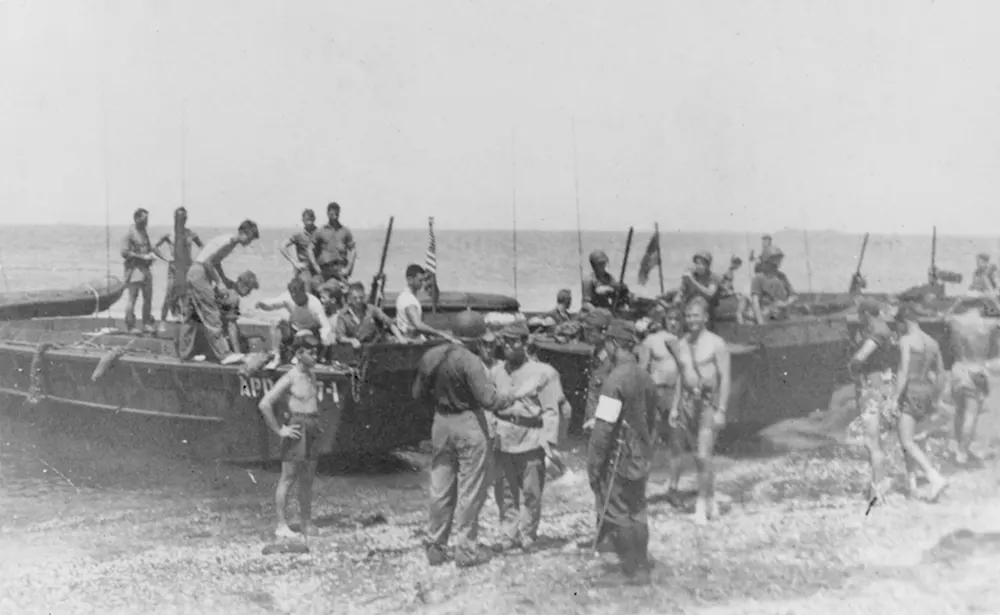
Lt. Commander Porter Clayton accepts a ceremonial sword as a gesture of surrender. Picture taken on Futtsu Saki Peninsula.

Gen. MacArthur signs Japanese Surrender Instrument.
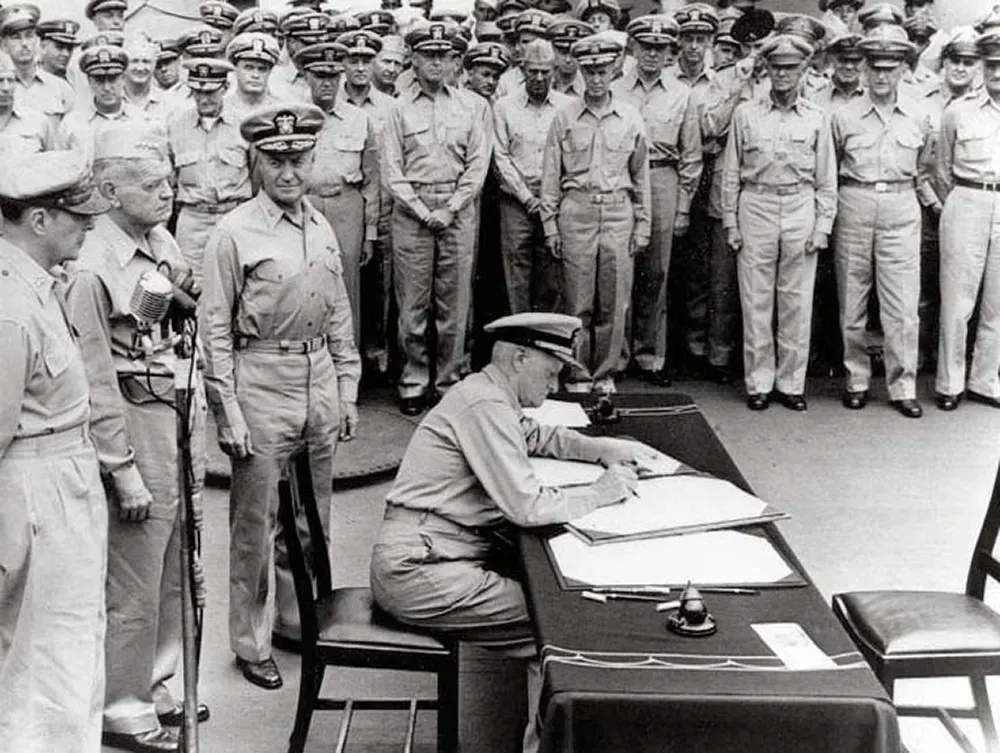
FAdm. Nimitz signs Japanese Surrender Instrument.
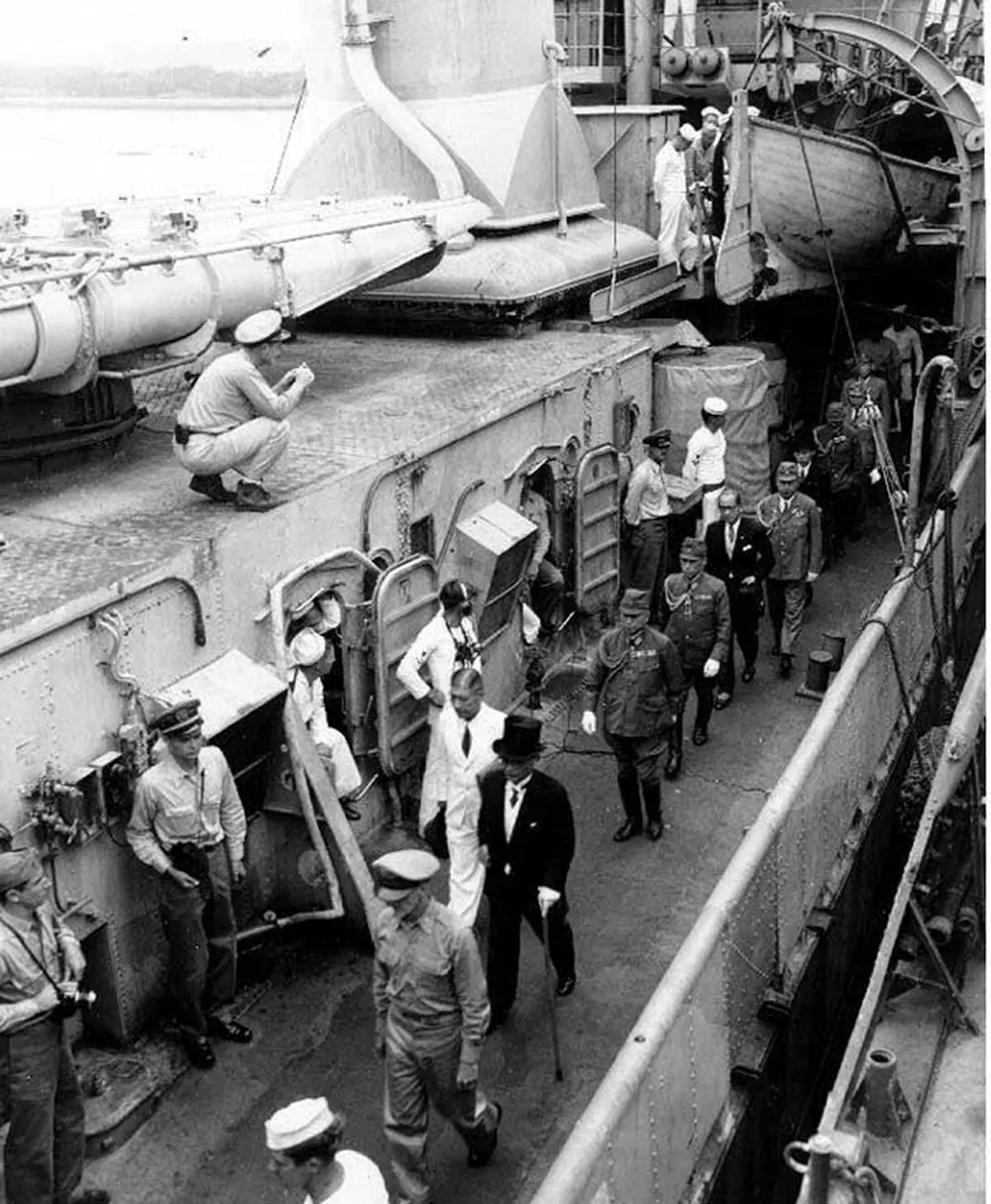
Japanese representatives follow their escort officer along the deck of USS Lansdowne (DD-486), after the surrender ceremonies. Foreign Minister Mamoru Shigemitsu is leading the delegation, followed by General Yoshijiro Umezu.

General Macarthur arrives on a C-47 to take over as Overlord of Japan.
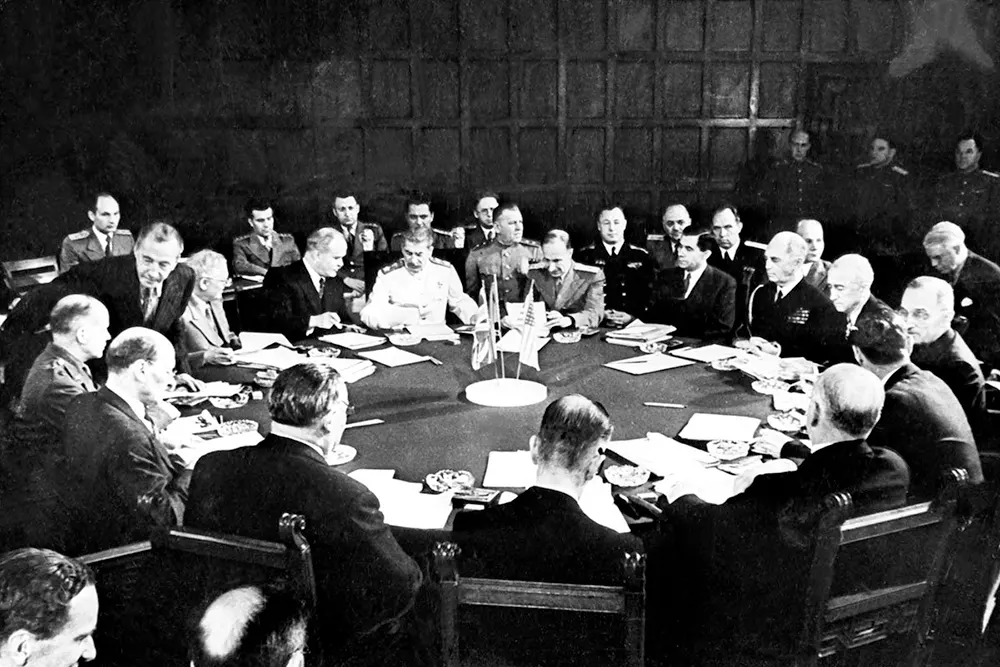
A session of the Potsdam Conference – those pictured include Clement Attlee, Ernest Bevin, Vyacheslav Molotov, Joseph Stalin, William D. Leahy, James F. Byrnes, and Harry S. Truman.

Atomic bombing of Nagasaki.

Allied personnel celebrate the Japanese surrender in Paris.
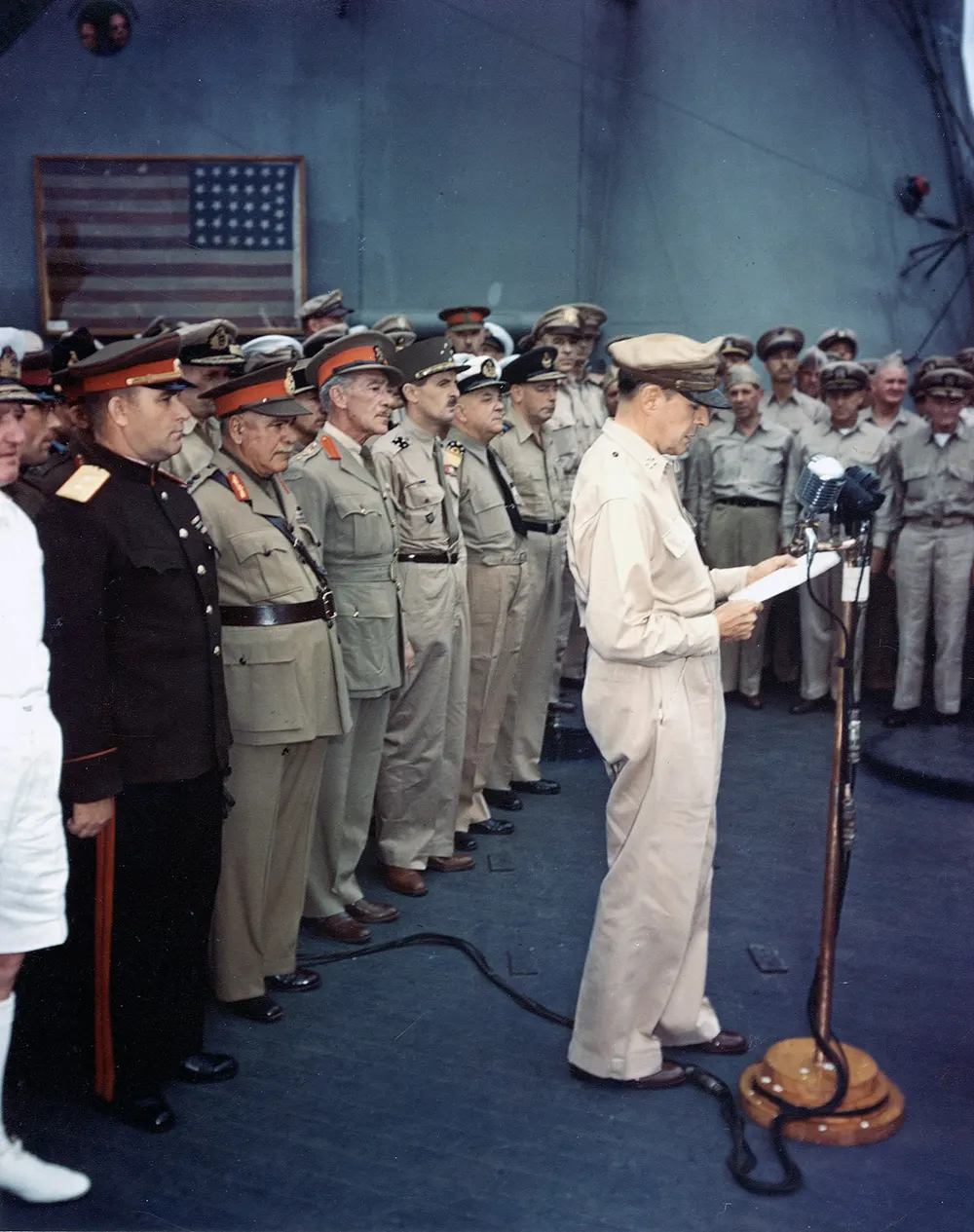
MacArthur at surrender ceremony. The flag flown by Perry is visible in the background.

Hatazō Adachi, the commander of the Japanese 18th Army in New Guinea, surrenders his sword to the commander of the Australian 6th Division, Horace Robertson.
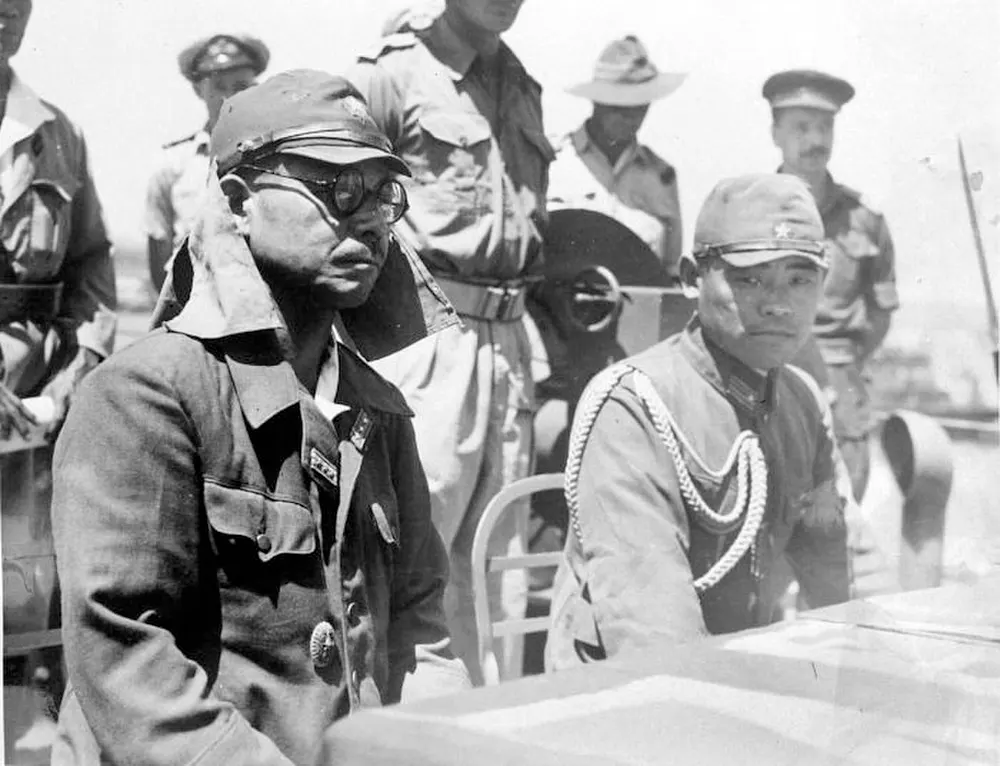
Kaida Tatsuichi, commander of the Japanese 4th Tank Regiment, and his chief of staff Shoji Minoru listen to the terms of surrender on HMAS Moresby at Timor.
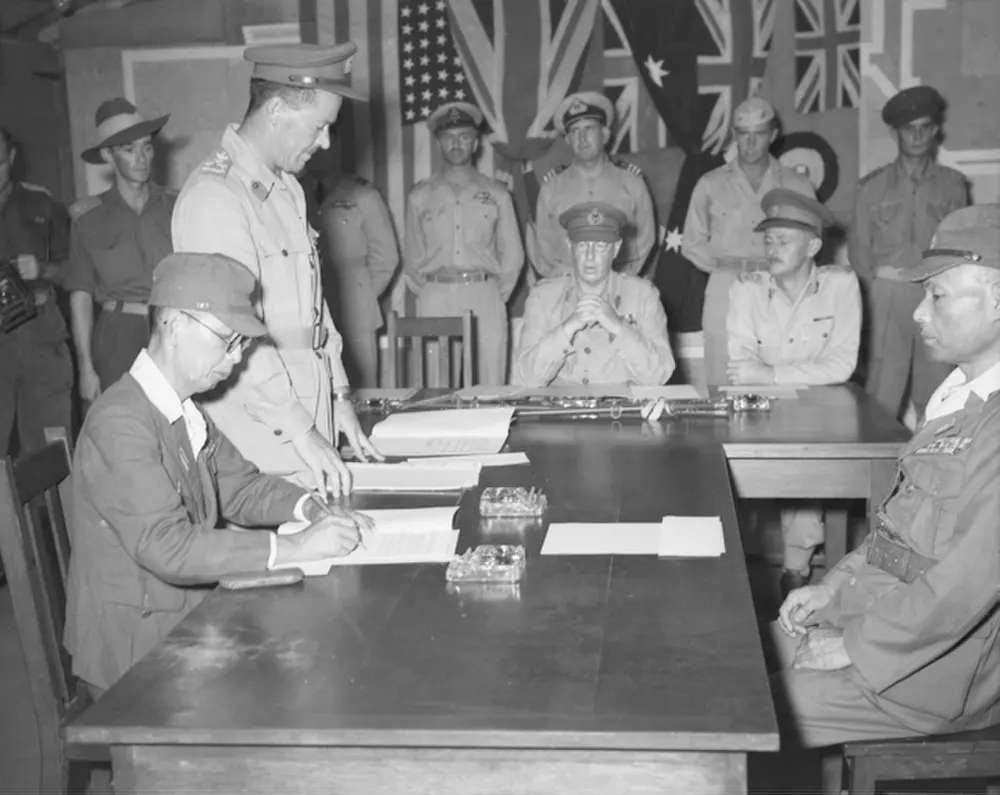
Masatane Kanda signs the instrument of surrender of Japanese forces on Bougainville Island, New Guinea.

A Japanese officer surrenders his sword to a British Lieutenant in a ceremony in Saigon, French Indochina.

A Japanese Navy officer signing the surrender of Penang aboard HMS Nelson on 2 September 1945. Penang was liberated by the Royal Marines on the following day under Operation Jurist.
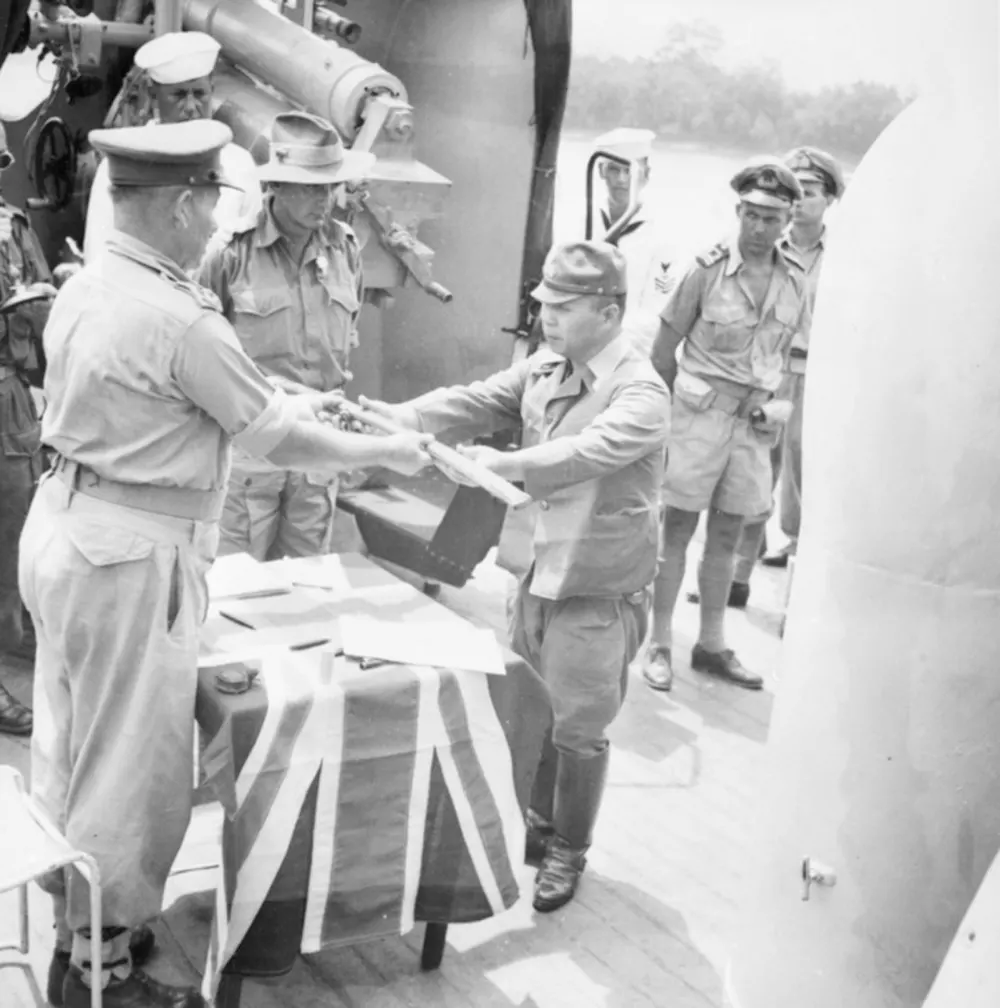
The official surrender ceremony of the Japanese to the Australian forces on board HMAS Kapunda at Kuching, Kingdom of Sarawak, on 11 September 1945.

The surrender ceremony of the Japanese to the British forces with General Itagaki surrendering his sword to General Frank Messervy at Kuala Lumpur, British Malaya, on 22 February 1946.
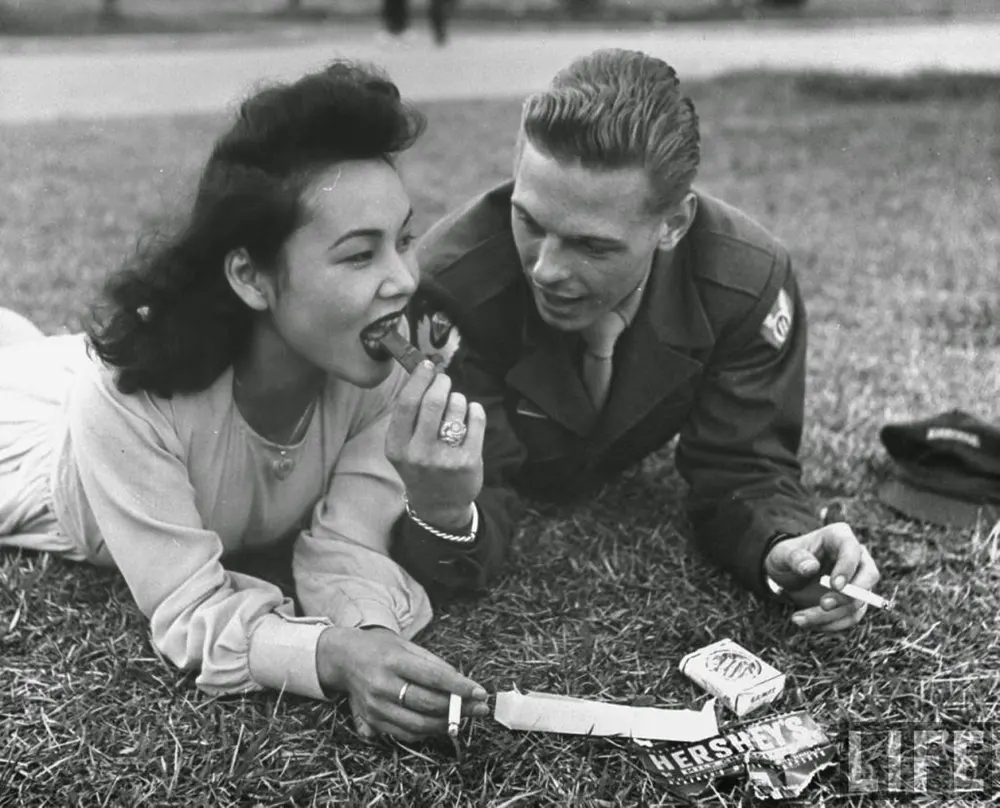
An American soldiers with a new friend in the occupied Japan.
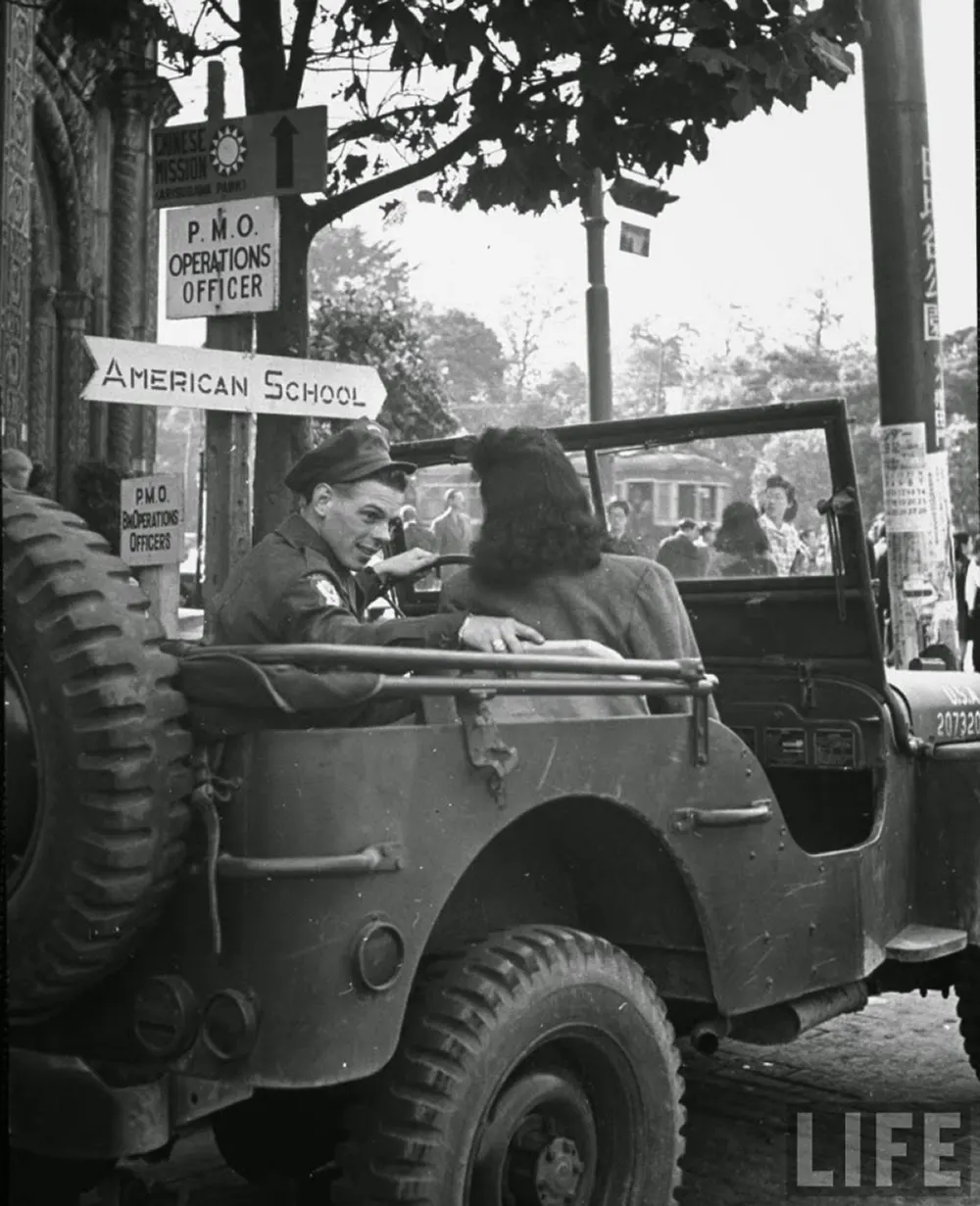
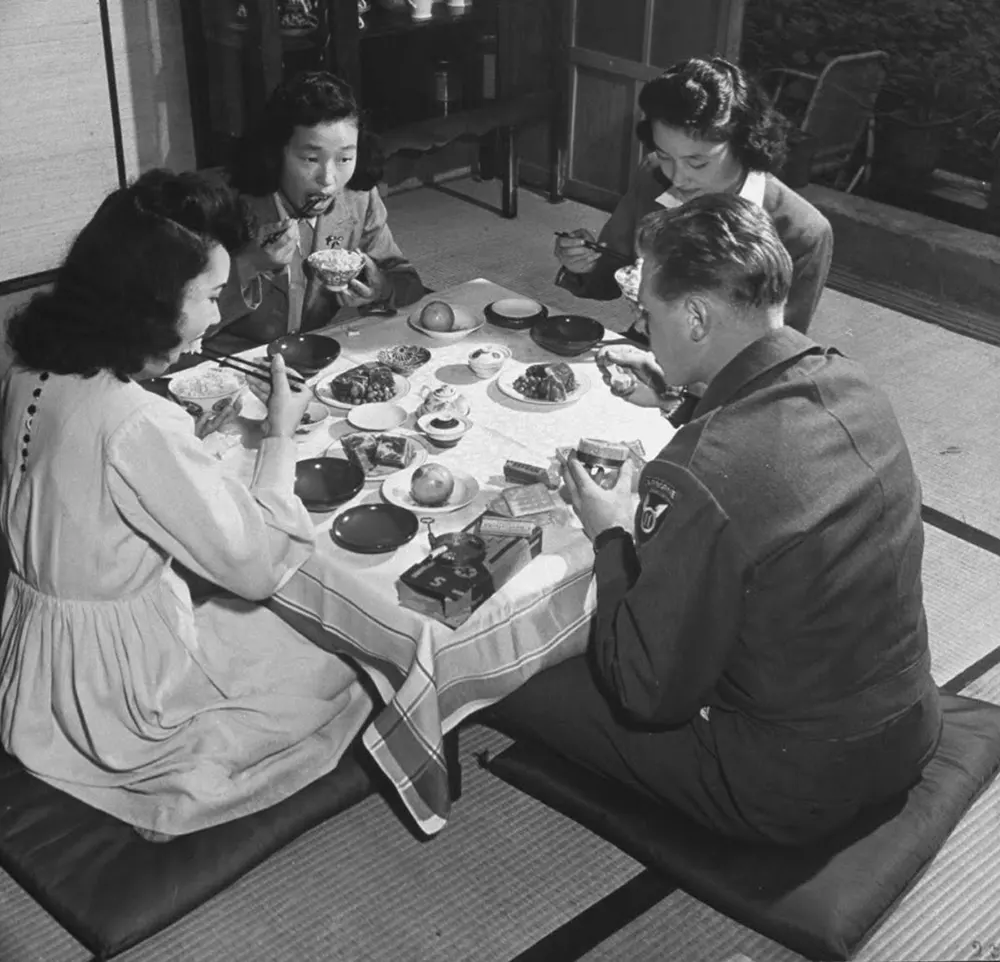
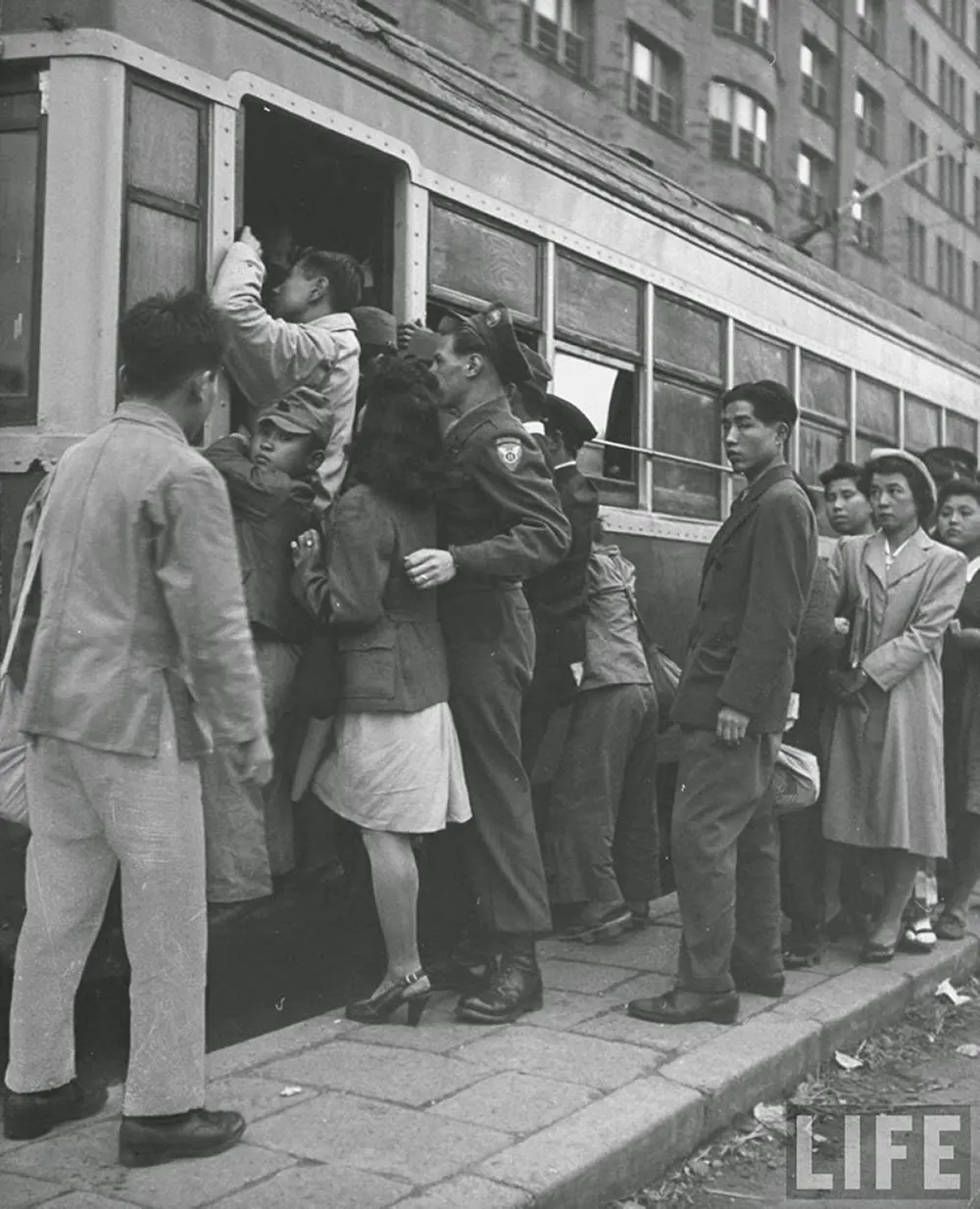
Occupation soldiers were allowed on subways, but not regular train cars.


President Truman with the Japanese surrender documents.
(Photo credit: US Army Archives / Wikimedia Commons / Britannica / LIFE Magazine / National Archives).